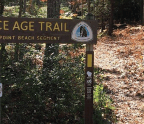BETTER ANGELS AT WORK
’s plot, but author Stephen Puleo surprises and moves by illuminating so much more than that elevator-pitch subtitle might imply. The catastrophic famine occurred when the potato crop, central to the diet of a land then under hammer-headed British dominion, failed beginning in—and Britain’s response intensified a tradition of Irish emigration and still resonates in Eire as a nationalist chord; vide electoral successes accorded Sinn Fein, a party founded as the Irish Republican Army’s political wing. And in the life-saving mission, undertaken even as the United States was waging a war of expansion against Mexico, debuted on the world stage, what emerged was a characteristic national duality of martial swagger and good works. Between these points Puleo nocks the arrow of research, draws the bow of writerly skill, and lets fly a gripping, heartbreaking story propelled by a string of unexpectedly intertwining themes. His protagonists are American shipping magnate Robert Bennet Forbes and Capuchin priest Theobald Mathew. Forbes, whose fortune’s sources included the opium trade, captained U.S. Navy sloop of war , stripped of 20 of 22 deck guns to hold 8,000 barrels of provisions and clothing. Tipperary-born Father Mathew, who had been advocating for Ireland’s poor, attacked the famine by reframing his approach from preaching temperance to keeping beleaguered people alive. Besides a dramatic narration of the Navy three-master’s storm-tossed voyage and a study of the intricacies of incunabular international relief work, other threads follow the actions of President James K. Polk and British Treasury official Charles Trevelyan, as well as of the American people, who after decades of scorning immigrant Irish and their papist ways responded to tragedy with unified and alacritous generosity. Eventually in excess of 100 American-flagged relief vessels streamed to Irish ports. Puleo takes care to explain how the potato became essential to the Irish—and to profile his tale’s true villain. The fungus caused the blight that killed the crops. The chronic islandwide starvation that resulted from years of failed harvests consigned multitudes to mass graves. Other thousands, skeletal but drawing breath, left their homeland as refugees, many of them sailing across the Western Ocean to “Amerikay.” American History
You’re reading a preview, subscribe to read more.
Start your free 30 days





